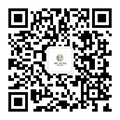NEWS
Wind Turbine Grease Catching Bottles: Design, Applications, and Material Innovations
Date:
2025-10-24
Source:




1. Origin and Purpose
Wind turbine oil collection bottles, commonly referred to as "oil collection bottles" or "lubricant drain bottles", emerged as a critical solution to address lubricant leakage and environmental contamination in wind energy systems. These bottles are engineered to collect waste lubricants (e.g., grease or hydraulic oil) from critical components like main bearings, yaw systems, and pitch systems .
In wind turbines, excessive lubricant leakage can lead to:
Environmental pollution: Oil spills contaminate soil and water, violating sustainability goals.
Operational inefficiency: Residual oil interferes with mechanical movements, increasing friction and wear.
Safety risks: Flammable lubricants pose fire hazards in confined turbine enclosures.
The first-generation oil collection bottles were simple metal or plastic containers attached to drain ports. However, their limitations—such as poor sealing and difficulty in maintenance—prompted innovations like siphon tubes and modular designs to enhance efficiency .
2. Key Applications
Oil collection bottles serve three primary functions in wind turbines:
Leakage Containment:
Capture excess lubricant from bearing housings and gearboxes to prevent oil migration to sensitive areas like electrical components .
Pressure Relief:
Act as a buffer to balance internal pressure caused by thermal expansion of lubricants, reducing seal failure risks .
Environmental Compliance:
Centralized collection enables safe disposal or recycling of used lubricants, aligning with EU’s Circular Economy Action Plan and China’s Green Energy Policies .
For example, yaw system bearings in offshore turbines require frequent lubrication. Without proper drainage, saltwater corrosion from maritime environments accelerates component degradation. Oil bottles mitigate this by isolating contaminants .
3. Classification by Design and Function
Oil collection bottles are categorized based on structural and operational requirements:
| Type | Description | Use Case |
|---|---|---|
| Standard LDPE Bottles | White semi-transparent, -40°C to +50°C tolerance, with siphon tubes for airflow. | General-purpose use in onshore turbines . |
| Lockable Anti-Leakage | Reinforced threads and silicone seals to prevent accidental dislodgement during vibrations. | High-vibration zones (e.g., gearbox drains) . |
| Modular Assemblies | Interlocking plastic parts for easy disassembly during maintenance. | Offshore turbines requiring rapid servicing . |
| High-Capacity (500mL) | Larger volume for extended service intervals in low-maintenance regions. | Remote wind farms with limited access . |
4. Material Innovations
The choice of materials determines durability, chemical resistance, and environmental impact:
Low-Density Polyethylene (LDPE):
Advantages: Lightweight, corrosion-resistant, and flexible for thermal cycling (-40°C to +50°C). Widely used due to cost-effectiveness .
Limitations: Susceptible to UV degradation; often coated with UV stabilizers for outdoor use.
Polypropylene (PP):
Applications: High-temperature scenarios (e.g., near generator bearings). Withstands up to 120°C .
Composite Materials:
Fiberglass-Reinforced Plastic (FRP): Combines strength and chemical inertness for offshore installations .
Biodegradable Options:
Emerging PLA (Polylactic Acid) bottles for eco-friendly waste management, though limited by higher costs .
5. Future Trends
Smart Integration: Sensors to monitor oil levels and pressure in real time, enabling predictive maintenance .
Modular Design: Quick-release mechanisms for faster replacement, reducing downtime .
Circular Economy: Partnerships with lubricant recyclers to repurpose collected waste into industrial additives .
Conclusion
Wind turbine oil collection bottles are indispensable for maintaining operational efficiency and environmental compliance. Advances in materials like LDPE and modular engineering continue to refine their design, while innovations in smart monitoring promise a future of safer, more sustainable wind energy systems.
For further technical specifications, refer to industry standards in IEC 61400-4 (Wind Turbine Safety) or manufacturer guidelines from companies like Siemens Gamesa and Vestas.
keywords:
Previous
Previous
Related news



